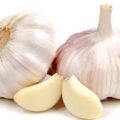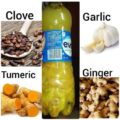
Healthy habits are the best way to avoid disease, prolong your life, and live more happily. But in the chaos of a woman’s daily life, healthy living may take back seat to chores, work, busy schedules, and more. Take these simple steps toward a longer, healthier life. Heart disease is the leading cause of death for American women. In the United States, 1 in 4 women dies from heart disease.
A good nutrition is the foundation of a healthy woman of maintaining a healthy weight. Carrying around extra weight can increase your risk of several conditions, including cancer, diabetes, and heart disease. In this article we will look at garlic and its health benefits for women’s health
What is Garlic?
Garlic (Allium sativum), is used widely as a flavoring in cooking, but it has also been used as a medicine throughout ancient and modern history; it has been taken to prevent and treat a wide range of conditions and diseases. Garlic belongs to the genus Allium and is closely related to the onion, rakkyo (an onion found in Asia), scallion, chive, leek, and shallot. It has been used by humans for thousands of years and was used in Ancient Egypt for both culinary purposes and its health and therapeutic benefits.
Richard S. Rivlin wrote in the Journal of Nutrition that the ancient Greek physician Hippocrates (circa. 460-370 BC), known today as “the father of Western medicine,” prescribed garlic for a wide range of conditions and illnesses. Hippocrates promoted the use of garlic for treating respiratory problems, parasites, poor digestion, and fatigue. The original Olympic athletes in Ancient Greece were given garlic – possibly the earliest example of “performance enhancing” agents used in sports.
What Are The Health Benefits Of Garlic For Women’s Health?
Breast cancer
Breast cancer begins in the breast tissue. It is characterized by the uncontrolled growth and spread of abnormal cells, which usually starts in the milk sacs or ducts. The tumour may be hard or soft and may sometimes be described as a thickening of the breast. Breast cancers are almost always painless.
Breast cancer is the most common cancer among women, other than skin cancer. It rarely affects men. One woman in nine will develop breast cancer during their lifetime. It is the second leading cause of cancer deaths in women, after lung cancer. It is the leading cause of cancer death among women aged 40 to 55.
Some research has found that people who eat more garlic AND onions have a lower risk of breast cancer. But other research has found that people who eat more garlic don’t have a lower risk of breast cancer.
Women’s bone health
Women tend to have smaller, thinner bones than men. Estrogen, a hormone in women that protects bones, decreases sharply when women reach menopause, which can cause bone loss. This is why the chance of developing osteoporosis increases as women reach menopause. Studies have shown that garlic can minimize bone loss by increasing estrogen in females.
One study in menopausal women found that a daily dose of dry garlic extract (equal to 2 grams of raw garlic) significantly decreased a marker of estrogen deficiency. This suggests that this supplement may have beneficial effects on bone health in women. Foods like garlic and onions may also have beneficial effects on osteoarthritis.
Women whose diets were rich in allium vegetables had lower levels of osteoarthritis, a team at King’s College London and the University of East Anglia, both in England, reported in the journal BMC Musculoskeletal Disorders. Examples of allium vegetables include garlic. The long-term study, involving more than 1,000 healthy female twins, found that those whose dietary habits included plenty of fruit and vegetables, “particularly alliums such as garlic,” had fewer signs of early osteoarthritis in the hip joint.
Preterm (premature) delivery
Microbial infections during pregnancy raise a woman’s risk of preterm delivery. Scientists at the Division of Epidemiology, Norwegian Institute of Public Health, studied what impact foods might have on antimicrobial infections and preterm delivery risk.T he study and its findings were published in the Journal of Nutrition. Ronny Myhre and colleagues concentrated on the effects of Alliums and dried fruits, because a literature search had identified these two foods as showing the greatest promise for reducing preterm delivery risk.
The team investigated the intake of dried fruit and Alliums among 18,888 women in the Norwegian Mother and Child Cohort, of whom 5 percent (950) underwent spontaneous PTD (preterm delivery). The study authors concluded, “Intake of food with antimicrobial and prebiotic compounds may be of importance to reduce the risk of spontaneous PTD. In particular, garlic was associated with overall lower risk of spontaneous PTD.
Vaginal yeast infections
Candidiasis is an infection caused by a yeast (a type of fungus) called Candida. Candida normally lives inside the body (in places such as the mouth, throat, gut, and vagina) and on skin without causing any problems. Sometimes Candida can multiply and cause an infection if the environment inside the vagina changes in a way that encourages its growth. Candidiasis in the vagina is commonly called a “vaginal yeast infection.” Other names for this infection are “vaginal candidiasis,” “vulvovaginal candidiasis,” or “candidal vaginitis.”
Yeast infections are a relatively common occurrence for women. According to Harvard Health, 75 percent of all women have or will have at least one vaginal yeast infection in their lives. Some early research suggests that applying a vaginal cream containing garlic and thyme nightly for 7 nights is as effective as clotrimazole vaginal cream for treating yeast infections. But other early research suggests that taking garlic (Garlicin, Nature’s Way) twice daily for 14 days does not improve symptoms.
Medical studies have tested the effectiveness of garlic on various diseases, but they’ve not been large or high-quality studies. In a 2006 study, garlic was tested against 18 Candida strains. Researchers found that garlic may be promising in reversing the effects of fungus growth. However, research from the University of Melbourne showed that short-term oral doses of garlic were inconclusive. SEE: Health Benefits and Side Effects of Eating Snails Meat




